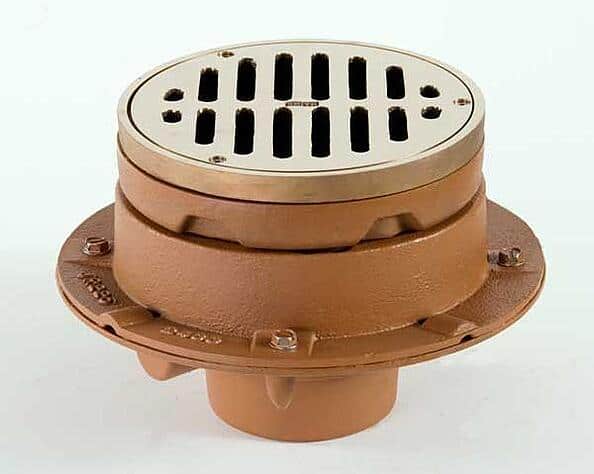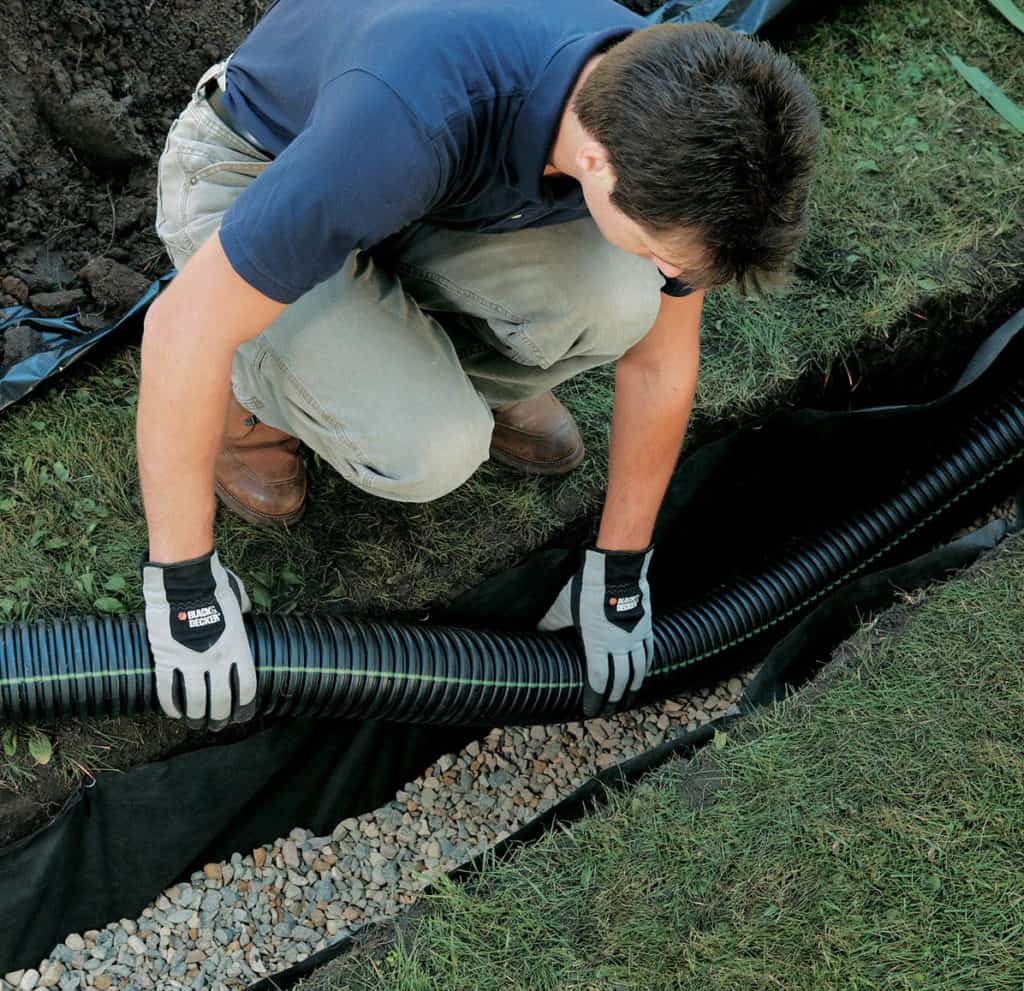Water can be your friend or it can be your enemy.
When it comes to your backyard oasis, you need to have adequate pool deck drains installed for proper drainage.
Without them, the pool becomes susceptible to a host of issues that can result in more time and money spent to repair them.
Why Is Deck Drainage Important?
A common misconception is that because pools are filled with water, and located outdoors (where it rains), that they are impervious to water damage.
The reality is that pretty much everything can be damaged by water and your pool is no exception.
Pool deck drains accomplish a number of tasks.
First, they protect the pool deck from water damage. When swimmers exit the pool, they drag a bunch of water out with them. The chemicals in the water can eat through, fade, and stain wooden pool decks, and cause cracks in concrete ones.
Additionally, with rainfall and rain water, a flood of water ends up pooling on the deck and needs somewhere to go so no damage occurs.
Second, it protects your pool water chemistry from becoming unbalanced. If there’s water runoff from your property, having pool deck drains can stop soil/sediment-filled water from entering the pool.
Finally, keeping water off your deck is a safety measure to prevent slippage and accidents from occuring around the pool.
Before Installing Pool Deck Drains
There’s a few important things you need to plan for when designing your pool drains.
How Much Should It Slope?
You want to work with gravity here. If you don’t factor in the correct slope (aka grading), the water will backup in the trench/pipe and can cause flooding.
A common rule of thumb to avoid this issue is to grade one quarter inch per foot of drain length.
Which Direction Should It Slope?
You always want water running away from things – whether it’s your pool or your home.
With this in mind, slope the drain toward softscapes like grass and flower beds. Make sure that the water has a place to go so it doesn’t get caught pooling.
In backyards that have a pool deck and patio combo, the most common drainage design is a valley. This is where water from both the deck and patio meet up at a single drainage point. In some cases, this point will be pitched to run off into a separate area of the yard.
Types of Pool & Deck Drainage Systems
Let’s take a look at what drainage options are available for your pool.
Strip Drains

Strip drains, or trench drains, are linear drains that resemble a trough and are installed into the deck of the pool.
Sometimes the drain is installed near the pool coping, while other designs place it further back on the deck.
Strip drains are covered by a grate (so you don’t fall in) and collect water in the trough. The drain is graded for water relocation, running it away from the pool area.
As you can see, it not only collects water that swimmers might leave on the deck, but it also acts as a barrier to prevent groundwater from entering the pool and upsetting its chemical makeup.
Pros:
- Efficient at collecting water
- Blends seamlessly into pool designs
- Various sizes and styles to choose from
Cons:
- Most expensive drain style
- Expensive installation if retrofitting
Spot Drains

Spot drains are circular drains that can be installed on your pool deck.
With this style, the deck itself is slightly pitched to the drainage point, which allows for better water collection.
These drains can be connected to a pipeline under the deck, or use a trough style. Either way, like strip drains, they relocate the water – getting it out and away from your pool.
Pros:
- Extremely affordable
- Less invasive aesthetically compared to strip drains
- Available in various materials (NDS 40, stainless steel, wood)
Cons:
- Less of a barrier to groundwater entry
- Most likely need replacement over time
- Pitched deck is sloped at drainage spots
French Drains

Protecting your pool deck from moisture isn’t just an issue concerning swimmers exiting the pool. In some instances, the level of slope on a property can collect rainfall, flooding the yard and directing it toward the pool.
For cases like this, a french drain can alleviate any water damage to the pool deck, and also stop your pool from flooding.
Named after its inventor Henry French (and not because it was invented in France), french drains are basically a trench system, and many homes have them installed on their property.
Pools that take up the majority of the backyard can benefit from french drains if their deck wasn’t designed with an adequate amount of drainage points.
To install them, you need perforated piping, filter fabric, gravel, and a shovel.
Trenches can be built anywhere on the property. You should always dig at least 2 feet down, and 1 foot from your house for each foot you dig. So if your trench is 4 feet away from your house, you need to dig 4 feet down.
You’ll also want to dig with slight grading, so the water naturally moves away from your pool and house. After the trench has been dug, it’s lined with gravel, then the filter fabric, and then the pipe.
Very important: the pipe MUST be perforated. Slotted piping works best to keep soil out of it. If your pipe is only perforated on one side, the holes must be pointed down. This will make it easier for the water to enter the pipe as it pools at its base and floods up into it.
To complete the drain, dump gravel on top of the pipe, wrap the filter fabric over top, refill with soil, and cover with sod.
It’s a fairly inexpensive drainage system, and can not only save you a lot of headaches with your pool, but also any water damage that may occur to your home.
Pros:
- Cheap
- Easy to install
- Eliminates yard flooding
Cons:
- Labor intensive depending on yard size
- Pipe can get clogged with soil/sediment
- Potential backflow issues over time
Let’s Talk Cost
Each drain comes with a different price tag.
Strip drains range from $150 to $500 for a specified length, and spot drains can top off at $50 each. The installation of them is usually worked into the overall cost of your pool.
If you’re retrofitting, installation will be a few thousand dollars, as concrete decks have to be cut up to make a trench, and then re-finished.
French drains only require basic items and some elbow grease, but installing them can be a few hundred dollars if you’re outsourcing the job.
Pool Decks & Patio Drains: Simplified!
Pool deck drains are an important and, dare we say, imperative component when it comes to keeping both your pool and backyard healthy.
Proper water drainage will prolong the life of your deck, your pool, and also protect your home’s foundation from developing any expensive water-related issues.
